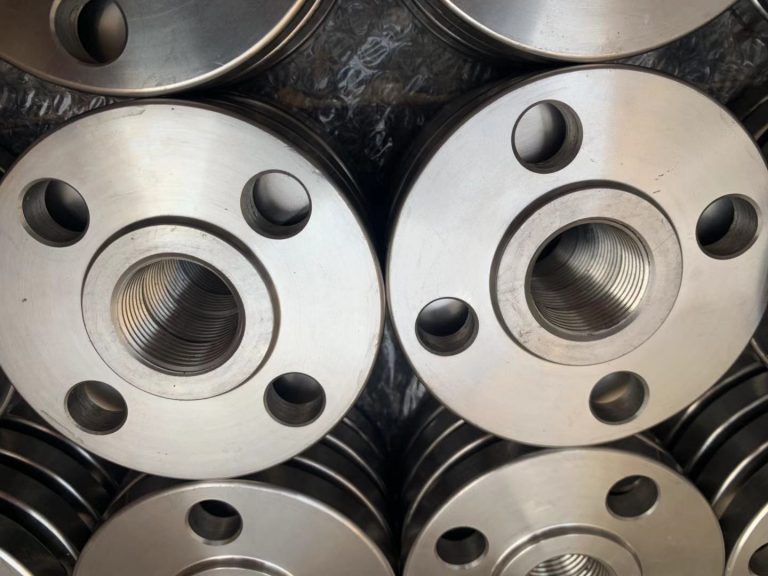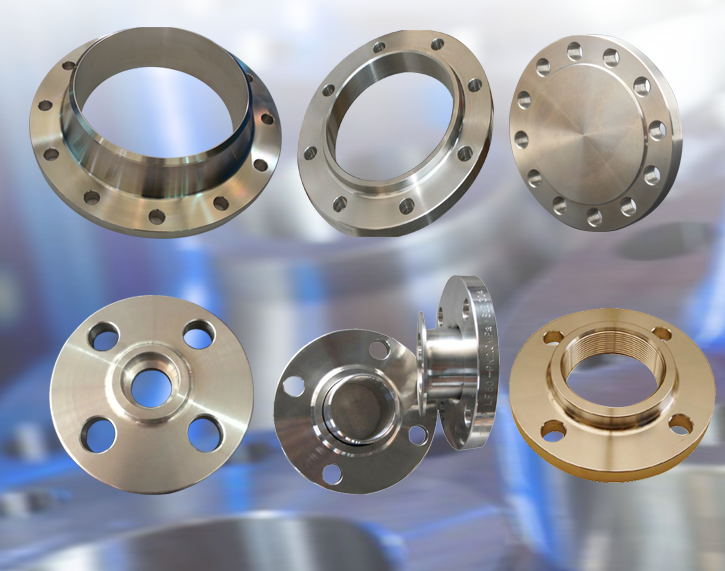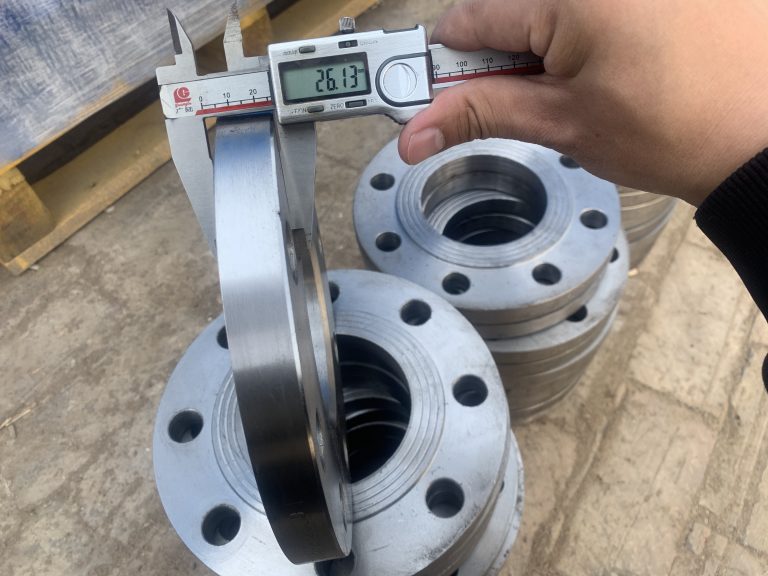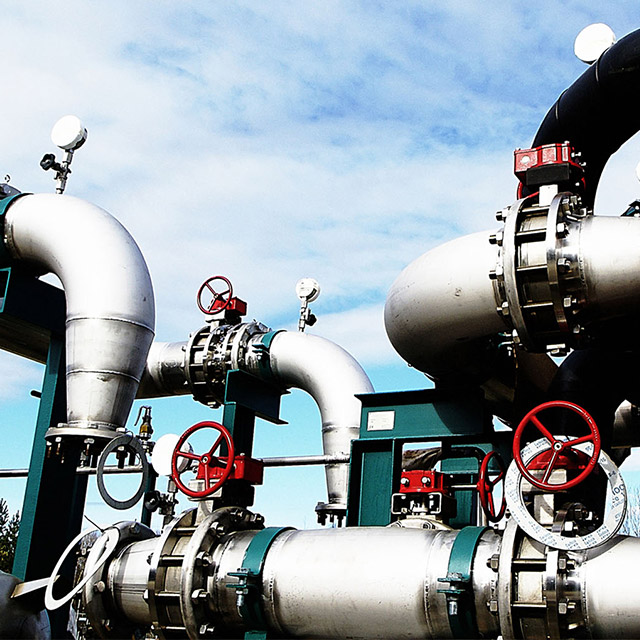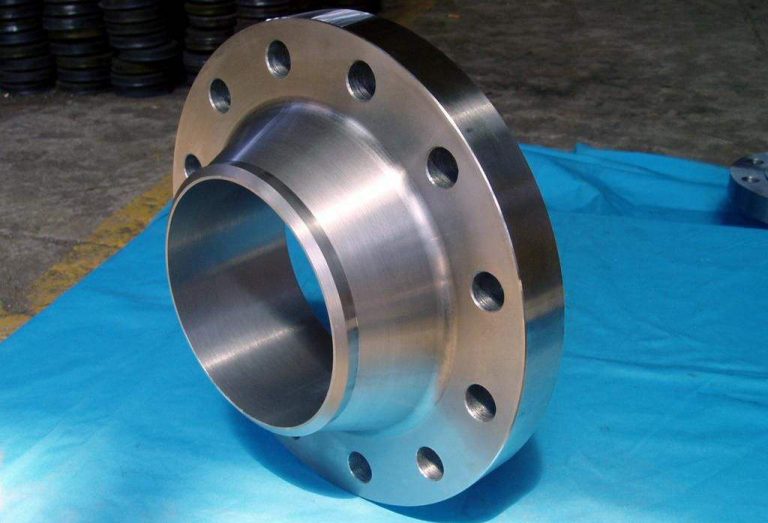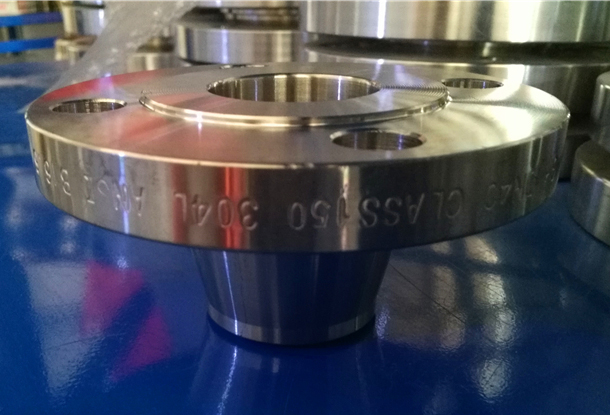Flanges play a crucial role in the construction and maintenance of pipelines, providing a secure and leak-proof connection between different sections. When it comes to choosing the right flange for a specific application, there are several industry standards to consider, such as ANSI (American National Standards Institute) and API (American Petroleum Institute) flanges.
In this article, we will delve into the differences between ANSI and API flanges, exploring their respective standards, specifications, and applications. By understanding these nuances, you will be able to make informed decisions when selecting the ideal flange type for your specific needs. Whether you are involved in the oil and gas industry, chemical plants, or any other sector that relies on pipeline connections, this article will provide you with valuable insights into choosing the most suitable flange for your applications.

I. ANSI Flanges
ANSI (American National Standards Institute) flanges are widely used in various industries for their standardized design and reliable performance. These flanges adhere to specific standards and specifications set by ANSI, ensuring consistent quality and compatibility. Here is an overview of ANSI flanges and their key features:
Definition, Standards, and Specifications:
ANSI flanges conform to standards such as ASME/ANSI B16.5 and ASME/ANSI B16.47. These standards define the dimensions, materials, pressure ratings, and facing types for ANSI flanges. The most commonly used face types are raised face (RF) and flat face (FF).
Key Features and Advantages:
ANSI flanges offer several advantages, including:
- Wide Compatibility: ANSI flanges are designed to be compatible with pipes and fittings that adhere to ANSI standards. This interchangeability makes them versatile and widely used in diverse industries.
- Reliable and Leak-Proof Connections: The standardization of ANSI flanges ensures precise dimensions and tight sealing, resulting in leak-proof connections that are crucial for pipeline integrity.
- Enhanced Strength and Durability: ANSI flanges are manufactured using high-quality materials, providing robustness and long-term durability even in demanding environments.
Applications and Industries:
ANSI flanges find applications in industries such as oil and gas, petrochemical, chemical, water treatment, and power generation. They are suitable for connecting pipes, valves, pumps, and other equipment in various fluid handling systems.
Relevance and Benefits in Pipeline Systems:
ANSI flanges play a vital role in ensuring the integrity and efficiency of pipeline systems. Their standardized design and compatibility simplify installation, maintenance, and repairs. ANSI flanges also facilitate easy modifications or expansions of pipeline networks, making them cost-effective solutions.
Yanhao (盐浩) and ANSI Flanges:
Yanhao offers an extensive range of ANSI flanges that cater to diverse customer needs. With a focus on professionalism, trustworthiness, and reliability, Yanhao ensures that their ANSI flanges meet industry standards and exceed customer expectations. From standard ANSI flanges to customized solutions, Yanhao delivers high-quality products that ensure reliable and efficient pipeline connections.
In conclusion, ANSI flanges are widely recognized for their standardized design, compatibility, and reliability. Understanding the features, advantages, and applications of ANSI flanges can help you make informed decisions when selecting the ideal flange type for your pipeline systems. Whether you are in the oil and gas industry or any other sector that relies on robust connections, consider the benefits that ANSI flanges offer for your specific applications.
II. API Flanges
API (American Petroleum Institute) flanges are specifically designed for industries related to petroleum and natural gas. These flanges adhere to standards and specifications set by the API, ensuring compatibility and reliability in demanding applications. Here is an overview of API flanges and their key features:
Definition, Standards, and Specifications:
API flanges conform to standards such as API 6A and API 17D. These standards define the dimensions, pressure ratings, materials, and testing requirements for API flanges. API 6A flanges are primarily used in wellhead and Christmas tree equipment, while API 17D flanges are specifically designed for subsea applications.
Key Features and Advantages:
API flanges offer several key features and advantages, including:
- High Pressure and Temperature Resistance: API flanges are designed to withstand high-pressure and high-temperature conditions commonly encountered in oil and gas operations. They provide a secure and reliable connection that maintains integrity even under harsh environments.
- Robust and Durable Construction: API flanges are typically made from high-quality materials that provide exceptional strength and durability. This ensures longevity and reliability in challenging conditions.
- Specific Design for Industry Requirements: API flanges are tailored to the specific needs of the petroleum and natural gas industries. They are engineered to meet the demands of drilling, production, and transportation systems, ensuring safe and efficient operations.
Applications and Industries:
API flanges are commonly used in industries such as oil and gas exploration, drilling, production, refining, and transportation. They are essential for connecting various components in oil wells, offshore platforms, subsea systems, pipelines, and other critical equipment.
Relevance and Benefits in Specific Industries:
API flanges play a crucial role in safeguarding the integrity and efficiency of operations in the petroleum industry. Their specific design, high-pressure resistance, and durability make them ideal for wellheads, Christmas trees, manifolds, blowout preventers, and related equipment. API flanges ensure a reliable and leak-free connection, enhancing safety and preventing costly downtime.
Yanhao (盐浩) and API Flanges:
Yanhao is dedicated to producing superior-quality API flanges that meet and exceed industry standards. Their API flanges are manufactured using advanced technologies and high-quality materials, ensuring durability and reliability in demanding oil and gas applications. With a commitment to customer satisfaction and product excellence, Yanhao delivers API flanges that meet the strict requirements of the petroleum industry.
In summary, API flanges are specifically designed for the petroleum and natural gas industries, offering high pressure and temperature resistance, robust construction, and industry-specific functionalities. Understanding the features, advantages, and applications of API flanges helps in choosing the most suitable flange type for specific industry needs. If your operations involve the petroleum industry, consider the benefits that API flanges offer for efficient and secure connections. Yanhao provides superior-quality API flanges that are trusted by customers worldwide for their reliability and durability.

III. Comparison between ANSI and API Flanges
Design and Dimensions:
- Design: ANSI flanges follow the standards set by the American National Standards Institute (ANSI), while API flanges adhere to the standards of the American Petroleum Institute (API). ANSI flanges are widely used in general industrial applications, while API flanges are specifically designed for the petroleum and natural gas industries.
- Flange Face: ANSI flanges have various face types, including raised face (RF), flat face (FF), and ring-type joint (RTJ). API flanges commonly have a raised face (RF) or ring-type joint (RTJ) face.
- Sizes: ANSI flanges are available in a wider range of sizes, from 1/2″ to 24″, while API flanges are typically larger, starting from 2″ or 3″ and going up to very large sizes.
- Pressure Ratings: ANSI flanges have pressure ratings ranging from 150 to 2500 pounds per square inch (PSI). API flanges have pressure ratings from 2,000 to 20,000 PSI.
Usage:
- ANSI Flanges: ANSI flanges are commonly used in a wide range of industries, including chemical, petrochemical, water treatment, power generation, and more. They are suitable for general-purpose applications and offer versatility and compatibility with different systems.
- API Flanges: API flanges are specifically designed for the petroleum and natural gas industries. They are used in applications such as wellheads, Christmas trees, drilling systems, production equipment, subsea systems, and pipelines. API flanges are engineered to withstand high-pressure and high-temperature conditions commonly encountered in oil and gas operations.
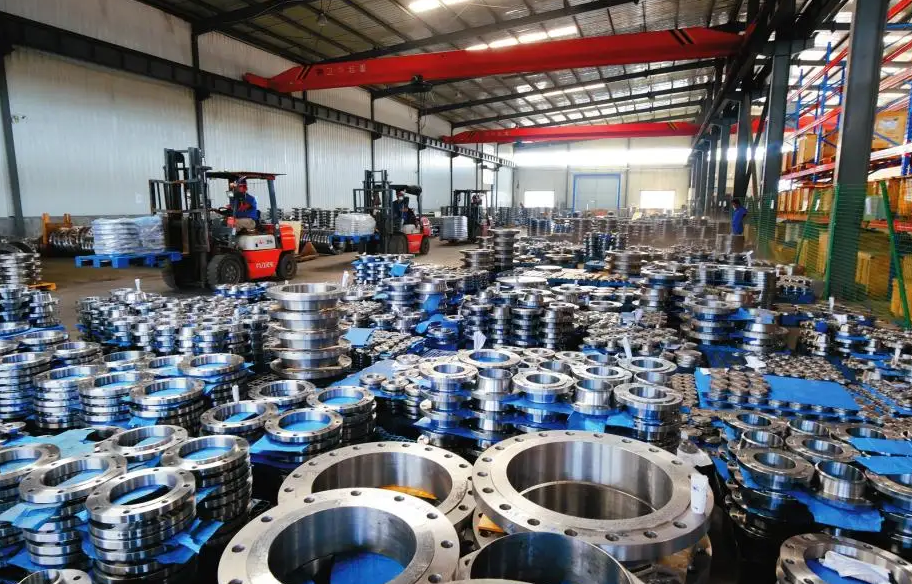
Compatibility in Pipeline Systems:
While ANSI and API flanges have some differences in design and dimensions, they can be compatible in pipeline systems. Adapters or transition flanges can be used to connect ANSI and API flanges when required. However, it is essential to ensure that the flanges used in a pipeline system have compatible pressure ratings, face types, and dimensions to ensure a secure and leak-free connection.
Choosing the Correct Flange Type:
Selecting the correct flange type for specific applications is crucial for several reasons:
- Safety: Choosing the right flange ensures a secure and reliable connection, minimizing the risk of leaks, spills, and accidents. Flanges that are not suitable for the intended application may fail under high pressures or temperatures, leading to hazardous situations.
- Compatibility: Different flange types have specific dimensions and face types. Using the correct flange ensures compatibility with other components in the system, such as pipes, valves, and fittings.
- Efficiency and Cost: Selecting the appropriate flange avoids unnecessary downtime, maintenance, and replacement costs. Flanges that are designed for the specific demands of an industry or application offer optimal performance and durability.
In conclusion, ANSI and API flanges have differences in design, dimensions, and usage. While ANSI flanges are versatile and widely used in various industries, API flanges are specifically designed for the petroleum and natural gas sectors. While they can be compatible with pipeline systems, proper consideration must be given to pressure ratings, face types, and dimensions. Selecting the correct flange type is crucial for safety, compatibility, and efficiency in specific applications, ensuring reliable and leak-free connections.
IV. Navigating Flange Sizing: Industry Standards and Their Application
The importance of proper flange sizing in pipeline connections
- Leak Prevention: Flanges create a secure and leak-free connection between pipes, valves, and other equipment. Proper sizing ensures that the flange can effectively seal the joint and prevent any leakage, which is essential for maintaining system integrity and preventing environmental damage or safety hazards.
- Structural Integrity: Flanges provide structural support and distribute forces and stresses evenly across the pipeline system. Incorrect sizing can lead to imbalanced loads, which may cause the flange to fail or increase the risk of mechanical failures and accidents.
- System Efficiency: Choosing the right flange size minimizes pressure drops and improves fluid flow efficiency. An oversized or undersized flange can create turbulence, resulting in increased energy consumption, decreased flow rates, and potential blockages.
Industry Standards for Flange Sizing
- ANSI Guidelines: The American National Standards Institute (ANSI) provides standards for flange sizing, including ASME B16.5 and ASME B16.47. These standards specify the dimensions, pressure ratings, and other parameters for various flange types, allowing for compatibility and interchangeability across different manufacturers.
- API Guidelines: The American Petroleum Institute (API) has its own flange sizing standards, including API 6A and API 17D, specifically tailored for the petroleum and natural gas industries. These standards outline the design, manufacturing, and testing requirements for flanges used in oil and gas applications.
Factors to Consider in Flange Sizing
- Pressure and Temperature: The pressure and temperature conditions of the application are crucial in determining the appropriate flange size. Flanges must be able to withstand the maximum operating pressures and temperatures without compromising the integrity of the connection.
- Pipe Size and Material: Flange sizing should match the size and material of the pipes to ensure compatibility and a secure fit. The flange size should correspond to the nominal diameter of the connecting pipe.
- Application Specifics: Consider the specific requirements of the application, such as the fluid being transported, environmental factors, and industry standards/regulations. These may influence the choice of flange size, material selection, face type, gasket material, and other design considerations.

Yanhao’s Expertise in Customized Flanges
Yanhao (盐浩) is a leading China flange manufacturer with expertise in providing customized flanges of various sizes and specifications. we have a thorough understanding of industry standards, including ANSI and API guidelines, and can manufacture flanges that meet specific requirements.
With its state-of-the-art manufacturing facilities, Yanhao can produce flanges in different materials, sizes, and pressure ratings to suit a wide range of applications. we have a strong quality control system to ensure all flanges conform to the highest standards and undergo rigorous testing to ensure reliability and performance.
Yanhao’s experienced engineers and technical team are dedicated to providing personalized solutions and assisting clients in selecting the right flanges for their specific needs. our commitment to customer satisfaction and their ability to deliver tailored flanges make them a reliable choice for flange sizing and supply.
Conclusion
ANSI and API guidelines play a crucial role in ensuring compatibility and interchangeability. ANSI standards, such as ASME B16.5 and ASME B16.47, provide dimensions and pressure ratings for flanges used in general applications. API standards, such as API 6A and API 17D, are specifically designed for the petroleum and natural gas industries, outlining requirements for oil and gas applications.
When selecting flanges, factors such as pressure, temperature, pipe size, material, and application specifics must be considered. Choosing the right flange type based on specific requirements is vital for maintaining system integrity and ensuring optimal performance.
Yanhao (盐浩) is a trusted provider of customized flanges, offering a wide range of sizes and specifications. our adherence to industry standards, state-of-the-art manufacturing facilities, and commitment to quality ensure that their flanges meet the highest standards. With their expertise and personalized solutions, Yanhao is a reliable partner for flange solutions in global markets.
Lewis Liu
Hello, I am Lewis Liu, a professional sales engineer with over ten years of experience in the flange fittings industry. I am highly knowledgeable in flange selection, installation, and maintenance. I am passionate about providing customers with the best solutions to ensure their pipeline systems run smoothly, safely, and reliably.
If you have any questions or concerns regarding flange fittings for your pipelines, whether it’s about selection, material choice, specification requirements, or any other aspect, please feel free to contact me at any time. I am committed to offering professional advice and assistance to help you make informed decisions and meet your needs.

